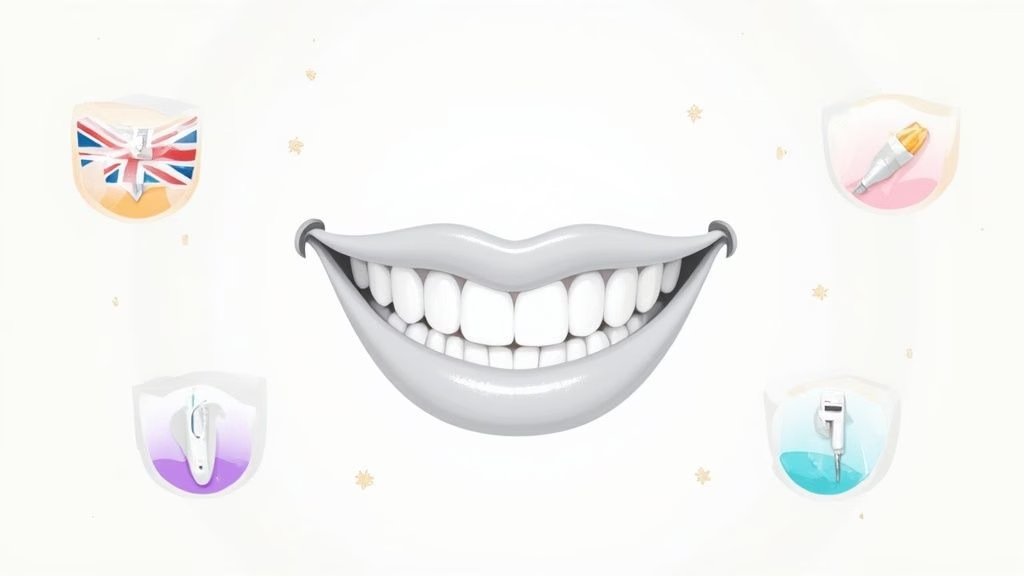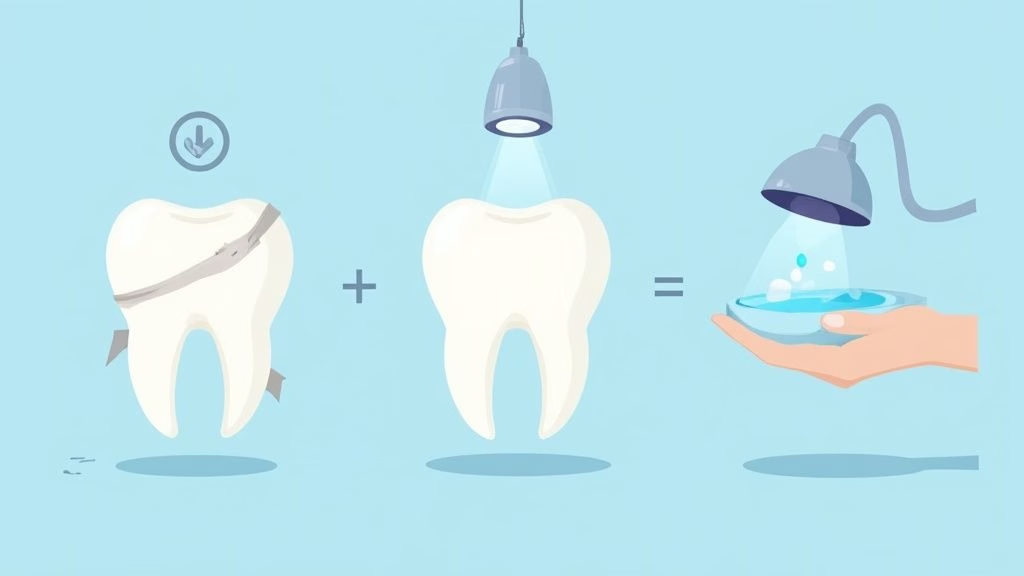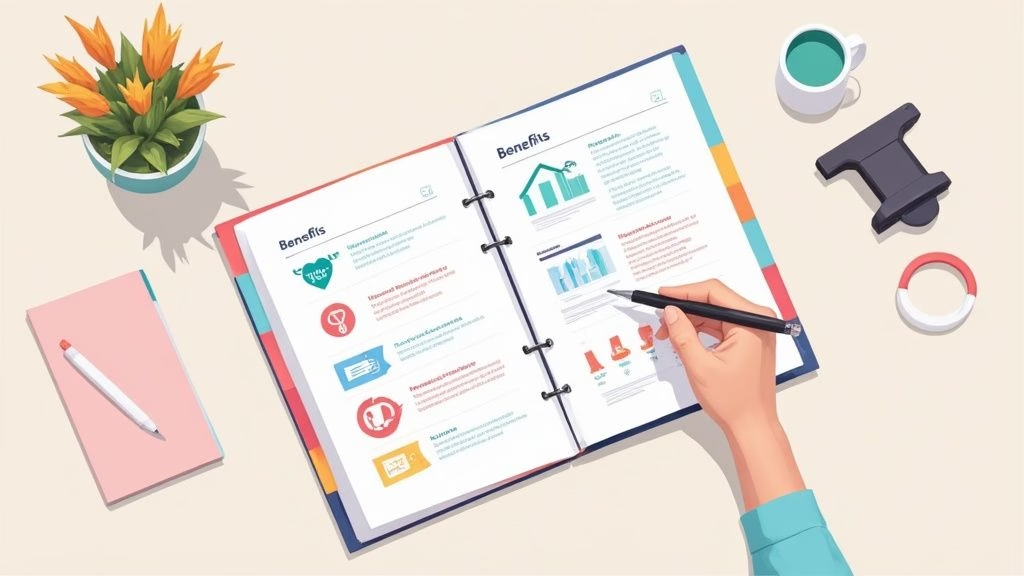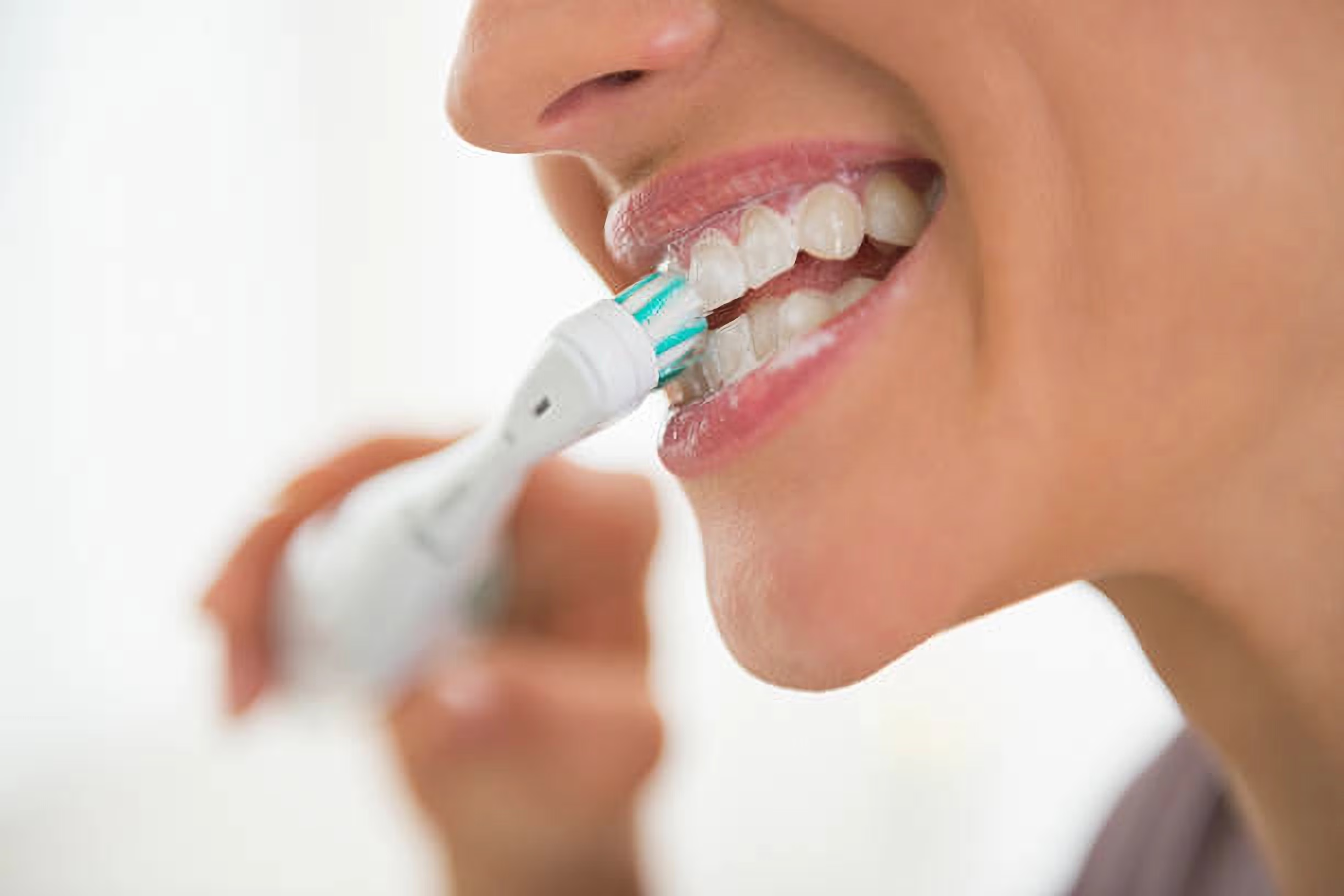best teeth whitening kits uk: Top Picks for a Brighter Smile

If you're on the hunt for the best teeth whitening kits available in the UK, you’ll quickly find that the most effective options are dentist-supervised. These systems pair professional-grade whitening agents with custom-fit trays, ensuring your results are both safe and even. While you can grab a kit off the shelf, they are legally limited in strength, which is why professional oversight remains the gold standard for achieving a truly brighter, healthier-looking smile.
Finding The Right Teeth Whitening Kit In The UK

Getting a whiter smile is one of the top cosmetic goals for people across the UK, but the sheer volume of choices can be daunting. From strips and LED devices in your local chemist to professional treatments at a dental clinic, it’s tough to figure out which way to go. The secret is realising that the "best" kit depends entirely on your own goals, budget, and starting point.
Before getting bogged down in brand names, it's worth reading through a comprehensive guide to teeth whitening options to get a feel for what’s out there. This will give you a solid foundation on the different methods on the market.
At-Home Kits vs Professional Solutions
The main differences between DIY kits and professional treatments boil down to three things: safety, ingredient strength, and customisation. In the UK, any whitening product sold over the counter is legally capped at 0.1% hydrogen peroxide. It's a strict safety measure designed to protect consumers from gum irritation or enamel damage.
On the other hand, a treatment prescribed and monitored by a dentist can contain up to 6% hydrogen peroxide. That’s a massive difference in concentration, and it's what allows dentists to tackle deep-set stains that shop-bought kits just can't shift.
| Feature | Over-the-Counter Kits | Dentist-Supervised Solutions |
|---|---|---|
| Active Ingredient Strength | Legally limited to 0.1% peroxide | Up to 6% peroxide (prescription only) |
| Application Method | Generic strips or one-size-fits-all trays | Custom-fitted trays made from a dental scan |
| Professional Oversight | None | Continuous monitoring by a qualified dentist |
| Effectiveness | Mild, best for very minor surface stains | Significant, targets deep intrinsic stains |
| Safety Risk | Higher risk of uneven results & gum irritation | Minimised risk due to custom fit and guidance |
A Smarter, More Affordable Approach
For a long time, getting professional-grade whitening meant booking expensive, time-consuming appointments at a dental clinic. Thankfully, modern services are completely changing how we approach this.
Toothfairy offers a smarter, more affordable way to get cosmetic dental work, straighten teeth, or handle dental emergencies. For whitening, we provide dentist-prescribed, professional-strength kits that you can use from the comfort of your own home. Through digital consultations and 3D scans, we create your custom-fit trays, delivering clinic-level results without the clinic-level price tag.
This model ensures you get a safe, effective treatment tailored precisely to your smile. It’s a much smarter way to manage cosmetic dental work, offering a genuinely affordable alternative to pricey in-person procedures or the premium-priced whitening often bundled by specific aligner brands. By putting a dentist in your pocket, you get the best of both worlds: professional power and at-home convenience.
So, How Does Teeth Whitening Actually Work?
Before you can pick the best at-home whitening kit, it helps to understand what's actually happening to your teeth. It’s not just about scrubbing them clean; it’s a chemical process that breaks down the stubborn molecules causing the discolouration.
The first step is figuring out why your teeth aren't as bright as they used to be. Not all stains are created equal, and knowing what you're dealing with is half the battle. This is especially true now, with so many of us looking for cosmetic dental treatments we can do ourselves.
The UK teeth whitening market is booming, pulling in around USD 248.3 million in 2023. And it's only set to grow as more people opt for at-home solutions. If you're interested in the numbers, you can explore the UK market growth insights for a deeper dive.
Extrinsic vs. Intrinsic Stains: Know Your Enemy
Tooth stains fall into two main camps: extrinsic and intrinsic. Tackling them requires completely different strategies.
-
Extrinsic Stains: Think of these as surface-level marks on your enamel, the tooth's outer layer. They’re the usual suspects – coffee, tea, red wine, and smoking are the main culprits. The good news is these are the easiest to shift, and you'll often see a difference with a good whitening toothpaste or a gentle kit.
-
Intrinsic Stains: These are the tough ones. They’re located deep inside the tooth, in the dentin layer right under the enamel. They can be caused by the natural ageing process, certain medications, an injury to the tooth, or simply your genetics. Surface treatments won't touch these.
The Science Bit: How Whitening Gels Break Down Stains
This is where the magic happens, thanks to active ingredients. The most common and well-researched whitening agent is hydrogen peroxide, which works its wonders through a process called oxidation.
When you apply a peroxide-based gel, it breaks down into tiny, highly reactive oxygen molecules. These molecules are small enough to pass through the pores in your enamel and get right into the dentin. There, they collide with the large, pigmented molecules that cause staining, shattering the chemical bonds that make them visible. This reaction effectively bleaches the stain molecules, making them colourless and leaving your teeth looking brighter from the inside out.
The real secret to powerful whitening is ensuring the active ingredient has enough uninterrupted contact time with your teeth. This is precisely why custom-fitted trays from a dentist are so effective—they hold the gel snugly against every nook and cranny, delivering a much more even and dramatic result than you’d ever get from flimsy strips or one-size-fits-all trays.
You might also see newer ingredients like Phthalimidoperoxycaproic Acid (PAP) popping up. It works in a similar way by oxidising stains but is often promoted as a gentler, peroxide-free alternative for those with sensitive teeth.
The UK Legal Limits You Need to Know
This is absolutely crucial for managing your expectations and staying safe.
The UK has very strict rules. Any teeth whitening product you can buy directly off the shelf or online can contain a maximum of 0.1% hydrogen peroxide. That’s a very low concentration, really only enough to lift the mildest surface stains. It simply isn’t strong enough to make a real dent in deeper, set-in discolouration.
To get your hands on something that delivers a noticeable, lasting change, you need a prescription from a dental professional. Dentists are legally allowed to prescribe at-home treatments containing up to 6% hydrogen peroxide—a concentration that's clinically proven to achieve dramatic results. Services like Toothfairy have made this incredibly straightforward, giving you safe, affordable access to professional-strength whitening that you can use at home under a dentist's guidance.
Comparing At-Home Teeth Whitening Methods
Walk into any chemist or browse online, and you're flooded with options promising a dazzling smile. From whitening strips to fancy LED kits, it's easy to feel a bit lost. But here’s the thing: each method is designed for different needs, budgets, and lifestyles. The real secret is looking past the marketing hype to figure out which approach actually makes sense for your teeth and what you’re trying to achieve.
A one-size-fits-all solution just doesn't cut it. What works brilliantly for someone with perfectly aligned teeth might be a complete waste of money for someone else with a bit of crowding. Getting this right is the difference between a successful whitening journey and a drawer full of disappointing, half-used kits.
This quick guide can help you figure out where to start, based on the kind of stains you're dealing with.

As you can see, the first question is whether your discolouration is just on the surface or something deeper. That single factor points you in a completely different direction.
Whitening Strips
Whitening strips are probably the most common and easiest-to-find option out there. They're thin, flexible little bits of plastic coated with a low-strength peroxide or PAP gel. You just stick them onto your front teeth for about 30 minutes a day.
Their biggest selling point is sheer convenience. If you have very minor surface stains and your teeth are pretty straight, you might see a subtle lift. The problem is, their simple design is also their biggest downfall.
Because the strips are flat, they just can't make proper contact with the natural curves of your teeth or get into the gaps between them. This is notorious for creating a patchy, uneven finish, leaving darker areas where the gel never reached. It’s a huge issue for anyone whose teeth aren't perfectly straight.
Whitening Gels and Trays
The next step up is usually a kit with a generic, one-size-fits-all tray and a whitening gel. The idea is to cover the entire tooth, which sounds better than strips. In reality, though, these "boil-and-bite" trays almost never fit snugly.
A badly fitting tray causes two major headaches:
- Gum Irritation: Whitening gel can easily squeeze out of the tray and onto your gums, which can lead to soreness and irritation.
- Patchy Results: Saliva gets inside the loose tray, watering down the gel and making it less effective. Again, you're left with an inconsistent result.
While they're a slight improvement on strips, they’re a world away from the precision you get with custom-made trays from a dentist.
LED Whitening Kits
LED kits have become hugely popular, often marketed as a high-tech shortcut to a brighter smile. These kits come with a whitening gel and a blue LED light device that you pop in your mouth to supposedly "activate" or speed up the whitening process.
Frankly, the science on whether these consumer-grade LED lights do much is shaky at best. The powerful, professional lights in a dental clinic can accelerate the chemical reaction, but the low-power LEDs in at-home kits are unlikely to make a meaningful difference. Their main effect is often psychological—it just feels more advanced.
The real work is still being done by the gel, and in the UK, that gel is legally capped at the same 0.1% hydrogen peroxide found in other over-the-counter products. So, you're not really getting any more whitening power than you would from gels or strips alone.
At-Home Teeth Whitening Method Comparison
To really see how these methods stack up against each other, it helps to put them side-by-side. Here’s a breakdown of the key things to consider for each of the popular at-home options available in the UK.
| Method | Ideal Use Case | Average Cost | Treatment Time | Sensitivity Risk | Overall Effectiveness |
|---|---|---|---|---|---|
| Whitening Strips | Minor surface stains on very straight teeth. | £20 – £50 | 30 mins daily for 14 days | Low to Moderate | Low (Patchy results common) |
| Gel Trays (Generic) | General surface stains; slight improvement over strips. | £30 – £80 | 30-60 mins daily | Moderate (Risk of gum irritation) | Low to Moderate (Uneven fit) |
| LED Kits | Users seeking a perceived "advanced" treatment for surface stains. | £50 – £150 | 15-30 mins daily | Moderate | Low to Moderate (Limited by gel strength) |
| Whitening Pens | On-the-go touch-ups for single spots or stains. | £15 – £30 | 1-2 mins application | Low | Very Low (For maintenance only) |
Looking at the table, a clear pattern emerges. The biggest weakness shared by almost all over-the-counter kits is their complete lack of customisation.
The Critical Role of Customisation
Everyone's smile is unique—the shape, the alignment, the little crevices. A generic, mass-produced product simply can't account for that.
This is exactly why dentist-supervised systems are in a different league. When a service like Toothfairy uses a 3D scan to create trays moulded perfectly to your teeth, it solves all the core problems of shop-bought kits. These custom-fitted trays ensure the professional-strength gel is held exactly where it needs to be.
This means you get:
- Complete Coverage: Every single surface of every tooth gets even exposure to the whitening agent. No patches.
- Maximum Safety: The perfect fit stops the gel from leaking onto your gums, which dramatically reduces the risk of irritation.
- Optimal Efficacy: Saliva is sealed out, allowing the gel to work at full strength for the entire treatment.
In the end, while over-the-counter kits are cheap and accessible, their results are held back by weak formulas and sloppy application methods. If you're after a safe, even, and genuinely transformative result, a dentist-prescribed approach is the smartest and most effective path to take.
The Benefits Of Dentist-Supervised Whitening

While over-the-counter kits promise a quick fix, they’re legally shackled in terms of whitening power. For results you can actually see—and that last—the gold standard has always been whitening supervised by a dentist. This isn't just about getting a brighter shade; it's about doing it safely, effectively, and with a plan that’s built around your unique dental health.
Having a professional oversee the process is the single most important factor. A qualified dentist can figure out why your teeth are discoloured in the first place, spotting the difference between simple surface stains and deeper issues that a shop-bought kit simply can't handle. That initial check is crucial to make sure whitening is even a safe and suitable option for you.
Precision And Power: The Professional Advantage
The biggest difference with a dentist-led approach is getting access to professional-grade whitening agents. Here in the UK, only a dentist can prescribe at-home kits with up to 6% hydrogen peroxide. That’s a world away from the tiny 0.1% legally allowed in products you buy off the shelf. This higher strength is what allows the gel to safely get inside the enamel and break down those stubborn, deep-set stains.
Of course, a powerful gel needs a precise application. That's where custom-fitted trays come in. Unlike the flimsy, generic trays from a chemist, these are made from a 3D scan or mould of your teeth. This perfect fit is non-negotiable for two key reasons:
- It actually works. The tray holds the gel snugly against every nook and cranny of each tooth, stopping saliva from diluting it and ensuring you get an even, consistent result.
- It’s much safer. A snug fit prevents the powerful gel from leaking onto your gums, which is a common cause of irritation with one-size-fits-all options.
A Modern Solution To An Old Problem
Traditionally, getting this level of care meant booking expensive, time-consuming appointments at a clinic. But the world of dental care is changing.
Toothfairy offers a smarter, more affordable route for services from teeth straightening to cosmetic dentistry. We bring the process into the 21st century by blending professional dental expertise with at-home convenience. You connect with a UK-registered dentist for a digital consultation through our app, and we use a 3D scan of your teeth to create your custom whitening trays. The whole clinic-quality system is then delivered right to your door.
This approach makes professional-grade whitening far more affordable and accessible. It’s a smarter path than paying high-street clinic prices or opting for the cosmetic whitening packages sometimes bundled with aligner treatments. You get the full benefit of a dentist’s prescription and custom trays, without the overheads of in-person visits.
Why Professional Oversight Matters Long-Term
A dentist does more than just prescribe a stronger gel; they manage your entire treatment. They can tweak the gel concentration if you run into sensitivity and give you proper advice on how to keep your smile bright for years to come. That kind of ongoing support is invaluable and something no over-the-counter kit can ever provide. For a closer look at the benefits, it's worth reading up on the reasons to choose professional teeth whitening over at-home kits.
Ultimately, when you’re looking for the best teeth whitening kits in the UK, the safest and most effective choice will always be one that includes professional dental supervision. It’s the only way to guarantee you’re using a product powerful enough to deliver real results and perfectly suited to your teeth. This blend of safety, customisation, and professional-strength ingredients is what sets dentist-supervised whitening apart as the clear winner.
Keeping Your Teeth Comfortable and Safe While Whitening
Let's be honest, the biggest worry for most people when it comes to teeth whitening is sensitivity. Will it hurt? It’s a fair question. That zingy feeling can happen when the whitening agent gets through your enamel to break up stains, temporarily opening up tiny channels that lead to the tooth's nerve. It's usually mild and doesn't last long, but knowing how to handle it makes all the difference.
Comfort and safety should always come first. A common issue with over-the-counter kits is the one-size-fits-all tray. If it doesn't fit your mouth properly—and it probably won’t—the gel can easily ooze out onto your gums. That can lead to soreness and irritation, which is the last thing you want.
Simple Ways to Reduce Sensitivity
If you do feel a bit of sensitivity, don't panic. It's completely normal and there are a few easy things you can do to get comfortable again.
- Switch to a sensitive toothpaste: Start using a toothpaste formulated for sensitivity a week or two before you even begin whitening. Ingredients like potassium nitrate work by calming the nerves in your teeth, essentially building up a defence before you start.
- Give your teeth a break: You don’t need to whiten every single day to get great results. If your teeth are feeling a bit tender, just take a day or two off. Spacing out the treatments won't harm your final outcome.
- Cut down the wear time: Instead of keeping your trays in for the full recommended period, try wearing them for a shorter time. You'd be surprised how much even a small reduction can help with comfort.
Why a Dentist's Guidance is Your Safest Bet
Trying to figure all this out by yourself can feel like a bit of a guessing game. This is precisely where having a professional in your corner pays off. A dentist can check your teeth beforehand and recommend the right gel strength and a schedule that’s designed just for you, which massively cuts down the risk of sensitivity from the get-go.
The most reliable way to whiten your teeth is with a system that's actually made for your mouth. Generic kits just can't compete with a service like Toothfairy. Our custom-made trays stop the gel from leaking, and a prescribing dentist makes sure you're using the right stuff, the right way. It’s simply smarter, safer, and works better.
The demand for teeth whitening in the UK is soaring, but that also means we need to be more conscious of doing it safely. A study by the Oral Health Foundation found that 40% of people under 35 in the UK have whitened their teeth, and almost half the population is thinking about it. With so many people interested, choosing a professionally supervised method has never been more critical. You can read more about the changing demographics of tooth whitening on Dentistry.co.uk.
At the end of the day, getting a brighter smile shouldn't mean sacrificing your comfort or oral health. By following these tips and, ideally, choosing a dentist-led option, you can make sure your path to whiter teeth is smooth and worry-free.
Your Top UK Teeth Whitening Questions Answered
It’s completely normal to have questions when you start looking into teeth whitening. From "Will it hurt?" to "How long will it last?", getting clear, honest answers is the first step to a brighter smile you can feel good about.
Let's cut through the confusion and tackle some of the most common queries we hear from people across the UK.
How Long Will My Teeth Whitening Results Last?
This is the big question, and the honest answer is: it depends entirely on your lifestyle. Your results could last for several months or even a couple of years, but it's not a one-and-done deal.
Think of it like this: anything that can stain a white shirt will stain your teeth. Daily coffee, tea, red wine, or even a regular curry will gradually undo your hard work. Smoking is another major culprit that will quickly yellow your newly whitened smile. Sticking to a great oral hygiene routine and using a good quality whitening maintenance toothpaste can definitely help keep the results for longer.
The great thing about using a dentist-supervised kit is how easy the upkeep is. To keep your smile looking its best, you'll likely only need a quick top-up treatment once or twice a year. It’s a simple way to tackle new stains and maintain that vibrant shade.
Can I Whiten Crowns, Veneers, or Fillings?
Simply put, no. This is a common point of confusion, but whitening gels—whether they use hydrogen peroxide or PAP—are designed to work only on natural tooth enamel.
They have zero effect on the materials used for crowns, veneers, bridges, or fillings. If you try to whiten your teeth with existing dental work, you’ll end up with a patchy, uneven result where your natural teeth lighten but the restorations don't. It's a look nobody is aiming for.
This is precisely why you should always start with a chat with a dentist. They can look at your existing dental work and help you map out a plan. Sometimes, this might mean replacing old fillings or crowns after you've whitened, so everything matches perfectly for a seamless, natural finish.
Are "Natural" Whitening Methods Like Charcoal Safe?
You see them all over social media, but DIY whitening trends like activated charcoal are a huge no from dental professionals. While they might seem like a cheap and harmless hack, they can cause serious, long-term damage.
Charcoal is incredibly abrasive. When you scrub it on your teeth, you're not really whitening them—you're literally scraping away the surface layer of your protective enamel. Over time, this can lead to permanent tooth sensitivity and even leave your teeth more vulnerable to cavities.
Worse still, there’s almost no solid scientific evidence proving they actually work. For results that are safe, predictable, and effective, stick to clinically proven products prescribed by a dental professional.
Is Buying Stronger Whitening Kits Online From Abroad Safe?
It might be tempting to order a powerful-looking kit from an overseas website, but this is a really bad idea. UK and EU regulations are there to protect you, and for good reason. They limit the hydrogen peroxide in over-the-counter kits to a tiny 0.1%.
Products from unregulated international sellers can contain dangerously high levels of bleaching agents. Using them can lead to grim consequences, like chemical burns on your gums, agonising sensitivity, and irreversible damage to your tooth enamel. The only safe and legal way to get your hands on stronger, truly effective whitening treatments in the UK is through a prescription from a registered dentist.
The move towards at-home cosmetic care is undeniable. Following the pandemic, the British Dental Association reported an 87% jump in sales for at-home dental kits in 2020 alone. If you'd like to dive deeper, you can learn more about UK consumer trends in at-home dental care.
Ready for whitening that actually works, without compromising on safety? Toothfairy puts you in touch with UK-registered dentists who can prescribe professional-grade whitening gel and custom-made trays, all through our simple app. Get the results you'd expect from a clinic, right from your own home.
Start your journey to a brighter smile with Toothfairy today!
Last updated on November 20, 2025

Dr. Deepak
ToothFairy Care Team.
Dr. Deepak
ToothFairy Care Team.





